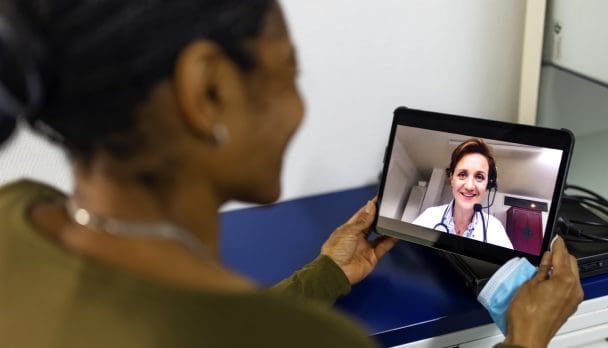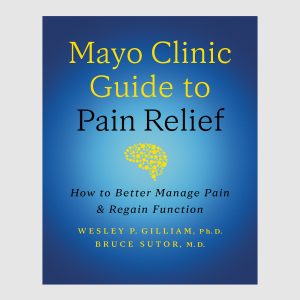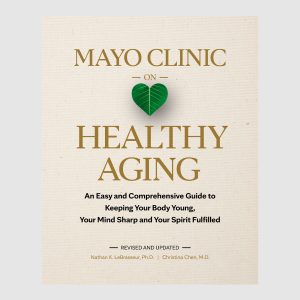
Mayo Clinic does not endorse companies or products. Advertising revenue supports our not-for-profit mission.
In the past, medical experts sorted breast cancer tumors into only two human epidermal growth factor 2 receptor (HER2) categories:
- HER2 positive.
- HER2 negative.
A HER2-positive status indicated breast cancer cells with extra copies of the HER2 gene, leading to increased expression of HER2 proteins on the surface of these cells. Higher-than-typical amounts of HER2 proteins on a cell’s surface are associated with cancer that spreads more quickly without treatment, says Mayo Clinic oncologist Roberto A. Leon-Ferre, M.D.
Conversely, a HER2-negative status indicated cells with typical amounts of HER2 proteins, making them less aggressive.
However, more recently, medical experts have identified two additional HER2 breast cancer tumor classifications: HER2 low and HER2 ultralow.
The rising relevance of HER2-ultralow breast cancer
HER2 proteins look like thin spikes or antennas on the outer surface of a cell. In HER2-low and HER2-ultralow cancer cells, the HER2 proteins are few and far apart. So when a cell needs to divide, two of these HER2 proteins must intentionally join together in a regulated, controlled way, signaling the cell to replicate.
However, when cells have higher-than-typical amounts of HER2 proteins, as is the case with HER2-positive breast cancer cells, these protein spikes can accidentally bump into one another, activating uncontrolled cell division.
The importance of further subdividing HER2 categories can be seen in the following timeline of medical discovery:
The initial HER2-targeted therapies
Older HER2-targeted therapies such as trastuzumab (Herceptin) or pertuzumab (Perjeta) encase HER2 proteins like soundproof armor, stopping them from triggering uncontrolled cell division. Subsequent HER2-targeted therapies such as lapatinib (Tykerb), neratinib (Nerlynx) and tucatinib (Tukysa) work by blocking the signal triggered by excess of HER2-proteins bumping into each other.
These mechanisms are useful in stopping uncontrolled cell growth in HER2-positive tumor cells.
However, these medicines aren’t helpful in cancer cells in which the HER2 proteins rarely, if ever, accidentally touch. For this reason, until recently, cancer cells that didn’t respond to the initial HER2-targeting medicines were sorted into the HER2-negative category.
Newer and more potent HER2-targeted therapies
Newer HER2-targeted therapies, such as trastuzumab deruxtecan (Enhertu), work in two ways. Like older HER2-targeting drugs, they encase HER2 proteins. But in addition, these newer targeted medicines contain chemotherapy. When these drugs attach to a HER2 protein on a cancer cell’s surface, the cancer cell ingests the chemotherapy and dies.
“Because of this development, we started to review whether tumors previously categorized as HER2 negative were actually tumors that could be categorized with low or ultralow amounts of HER2 to see if they might benefit from this new therapy,” says Dr. Leon-Ferre.
HER2 negative versus HER2 low versus HER2 ultralow
HER2-low and HER2-ultralow breast cancer cells contain far fewer HER2 proteins than do HER2-positive cancer cells. However, both types seem to have enough HER2 proteins on cell surfaces for trastuzumab deruxtecan and newer antibody-drug conjugates to make an impact.
In a clinical trial published in The New England Journal of Medicine in 2022, people with HER2-low breast cancer cells who were treated with trastuzumab deruxtecan, often referred to as T-DXd, lived nearly twice as long as those who were treated with traditional chemotherapy.
More recently, a separate trial determined that the same medication led to similar results in breast cancer cells considered to be HER2 ultralow.
“As long as there is at least some HER2 protein on the cell, the drug can attach and deliver the chemotherapy,” says Dr. Leon-Ferre. “It will work whether the tumor has an excessive amount of HER2 proteins or a small amount of HER2 proteins. However, we are not sure yet if it will have the same efficacy in HER2 completely negative cancers.”
How do experts determine HER2 status?
To determine the HER2 status of your tumor, a small sample of breast tissue is removed. This is called a biopsy. Then a pathologist uses a colored stain that makes the HER2 proteins more visible. This test is called immunohistochemistry (IHC) and uses the numbers 0 to 3 to designate HER2 status. A score of 0 represents no detectable amount of HER2 protein, and a score of 3 represents excessive amounts.
For tumor cells with an IHC score of 2, the pathologist performs a second test called fluorescence in situ hybridization (FISH).
| IHC test result | What it means | |
| 3+ | HER2 positive | |
| 2+ | Positive FISH test | HER2 positive |
| 2+ | Negative FISH test | HER2 low |
| 1+ | HER2 low | |
| > 0 to < 1 | HER2 ultralow | |
| 0 | HER2 negative | |
How is HER2-ultralow breast cancer treated?
Currently, the Food and Drug Administration has approved the use of trastuzumab deruxtecan for the treatment of HER2-positive or HER2-low stage 4 breast cancer that has spread (metastasized) to other parts of the body. However, research is ongoing. In the future, this second-generation HER2-targeted therapy may be approved for HER2-ultralow cancers as well.
Mayo Clinic does not endorse companies or products. Advertising revenue supports our not-for-profit mission.

Relevant reading
Back and Neck Health
Back and neck pain are common complaints. When you think of all of the work that your back and neck do each day — constantly moving, bending and twisting as you go about your day-to-day activities — it’s not surprising that problems develop. But just as doing too much can…




















